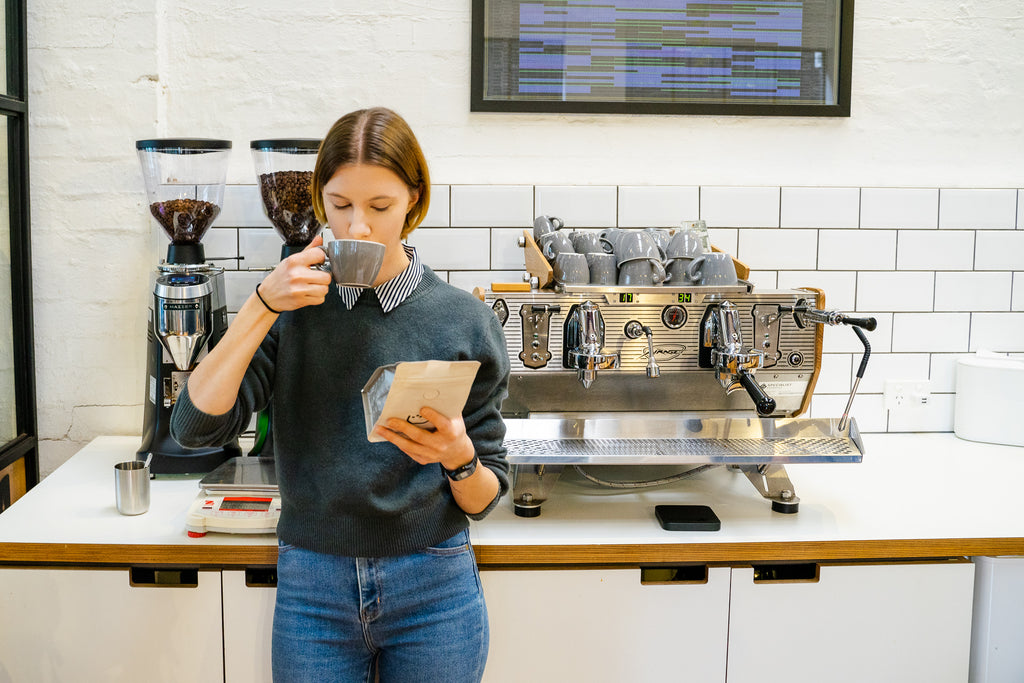Use code EASTER15 for 15% off coffee – ends April 21.


The Kenya Kaguyu AB is this fortnight's Fresh Crop coffee feature! Rachael from Padre Coffee Brunswick East shares her recipes for both filter and espresso below for this fortnight's Fresh Crop Exclusive!
Sweet, buttery and very delicious. No, I’m not describing a pack of assorted biscuits. Dare I say it’s something even better!
Kenya Kaguyu AB is bright and complex, starting with a sweet and smooth buttery-caramel and evolves to a finish that is reminiscent of plum and berries. This coffee hails from Kaguyu Factory which is located near the town of Kerugoya in the Ndia division of Kirinyaga county. These farms have red volcanic soil which produces coffee beans that are slightly more mineralised and flavourful.

Here the coffee is picked at an altitude of 1750 metres above sea level and brought to the factory to be processed using the double fermentation method - a process unique to Kenya. It is common for Kenyan coffee farmers to work with cooperatives which serve hundreds of farmers per factory. Although this impacts the traceability of the coffee, it still retains the trademark quality and depth of flavour that Kenya is renowned for.

Kenya’s coffee grading system sorts coffee beans by size for roasting consistency. Although AA grade beans are considered to be amongst the highest quality beans in the world, it is argued that AB coffee is often of superior quality. With this in mind, my expectations were high, and I was not disappointed.

The first thing that hit me when grinding this coffee was its sweet aroma. It was an interesting combination of sweet berries with hints of caramel layered throughout. The sweetness followed through in the first sip with notes of berries which was followed by a strong buttery-caramel body and a plum tart finish.
This is a coffee that I could easily enjoy when the sun’s warmth is a little harder to find and instead could more easily be found in a warm cup of a Kenya Kaguyu.

FILTER EQUIPMENT
RECIPE
PREPARATIONS

Fill your kettle with filtered water and preheat to 94 degrees.
While the water heats up, weigh and grind 22g of Kenya Kaguyu AB.
Place the v60 on top of the server. Then fold a filter paper along the seam and place it inside the v60.

Once the water has boiled, pour it in a circular motion onto the filter paper ensuring that it is thoroughly saturated. This will remove papery residue and heat up your server and the v60 while helping the filter paper stick to the side of the v60.
Remember to empty excess water from the server or else you will dilute your brew.

Add your ground coffee to the centre of the filter paper and give it a good, but gentle tap to create a flat coffee bed.
Place your server and v60 on top of the scales and tare. Get your timer ready and you're all set to brew!
STEP BY STEP GUIDE

00:00 - 00:30
Start your timer and begin pouring 50g of water in a circular motion, ensuring to evenly cover all of the dry coffee grounds. This activates the bloom process and you will begin to notice the bed will start foaming, this is the gases releasing from the beans.

00:30 - 01:00
Once your timer reaches 30 seconds, begin pouring 100g of water in a gentle spiral starting from the centre and circling outwards. Wait for your coffee to infuse.

01:00 - 01:30
Start your second pour using the remaining 150g of water. Use the same technique as before until you reach a yield of about 300g.

01:30 - 02:50
Once the coffee has had a few moments to brew and is beginning to draw down, give the water in the v60 a gentle swirl with a wooden spatula. Ensure that the coffee is evenly saturated and that there are no coffee grounds that are sticking to the top and sides of the v60.
Now stand back and let the coffee do its magic. This could take between 2 minutes and 40 seconds to 3 minutes.

02:50 - 03:00
Wait until the water has stopped dripping through the filter and remove the dripper from the v60. Give the coffee a good swirl, inhale the amazing aroma, and pour into your favourite mug.
Domestic espresso recipe

On the Slayer LP we use 21.5g of coffee and aim for a yield of 36g, however your machine and set up will determine what dose (and therefore, yield) you should aim for. Some domestic machines have 20-22g baskets, however some will only be able to hold 16-18g. Use the ratio to adjust the espresso recipe.

Padre Coffee acknowledges the Traditional Custodians of Country throughout Australia and their continued connections to land, sea and community.
We pay our respect to Elders past, present and future, and extend that respect to all Aboriginal and Torres Strait Islander Peoples.